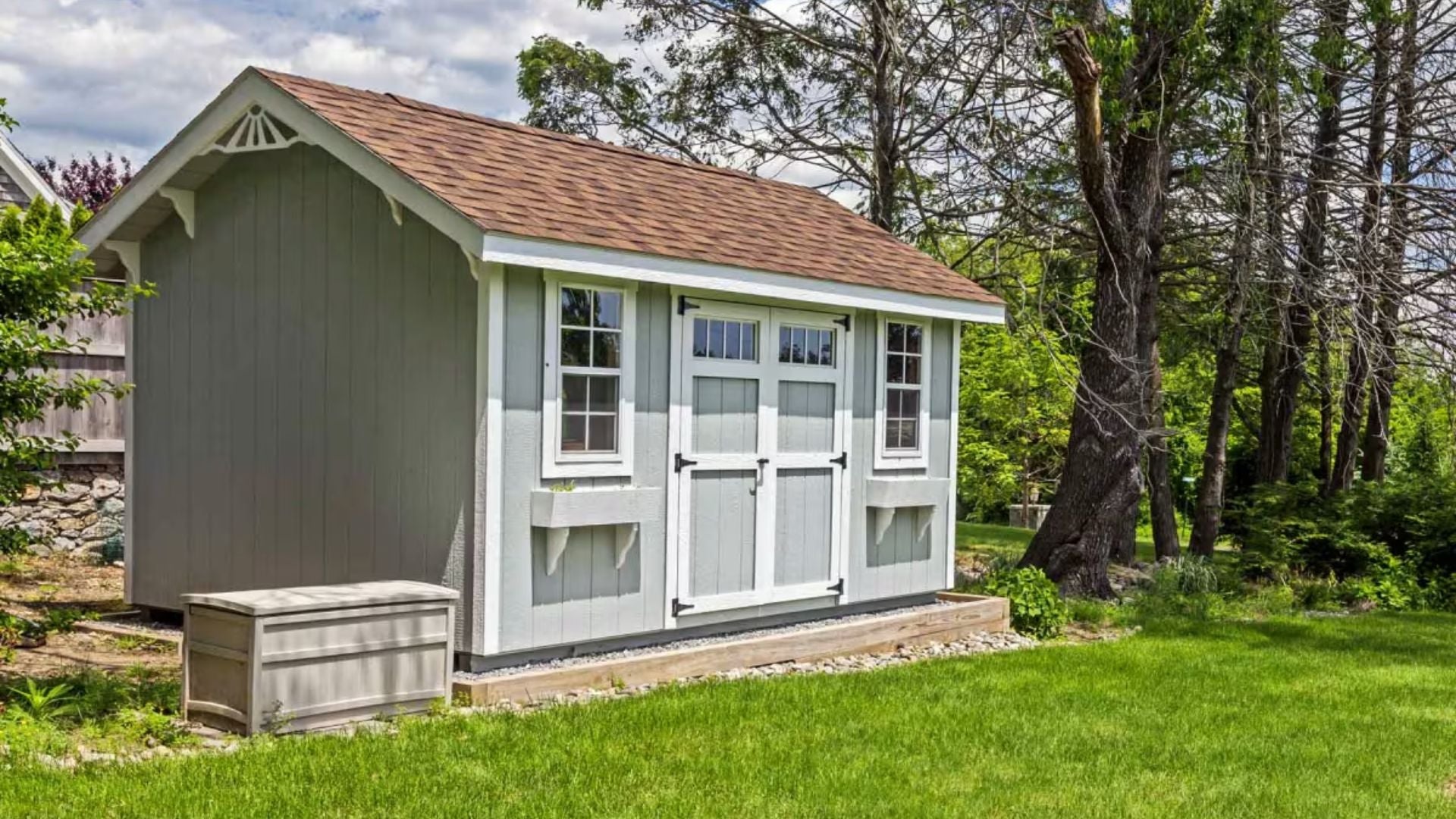If you’re’ wondering what size garden shed you need for your yard, this article will guide you through the key factors to consider before purchasing a shed. With sheds available in many different sizes and styles, determining the right size shed and layout to suit your space and storage needs takes some planning ahead.
Start by thinking about how you want to use your new garden shed. Will it primarily be for storing lawn furniture, garden tools and equipment? Or do you also want space for hobbies, bikes, holiday decorations and more? Defining the main purpose will help narrow down the right size.
Next, take measurements of your property to understand spatial constraints. Consider the total square footage of usable yard space, proximity to other buildings and boundaries, overhead obstructions like trees, and optimal placement for sun exposure. Larger sheds may require more open ground space and distance from other structures. Don’t forget to account for at least 0.6-0.9 meters of clearance around the shed for access and sufficient water runoff.
When determining what size shed will fit your yard, also think about future plans. For example, will you be doing landscaping renovations, patios, swimming pools or other backyard additions down the line? Leave enough room to accommodate future projects without the shed becoming an obstruction.
Popular Garden Shed Sizes
Garden sheds typically range from very small 1.2x1.8 meter mini sheds to large 3.7x6.1 meters and bigger for more spacious storage. Some of the most popular shed sizes include:

Small Shed
1.2x1.8 to 2.4x1.8 meters – Perfect for storing a lawn mower, gardening supplies, small furniture and other essentials. It’s easy to situate in most yards.
Medium Shed
2.4x2.4 to 3.7x4.9 meters – Provides enough room for shelving units, workspace benches, bicycles and more bulky items. A versatile mid-range size.
Large Shed
3.7x6.1 meters or bigger – Often barn-style with enough space for multiple vehicles and lawnmowers, significant shelving for surplus supplies, and room for hobbies or a workshop. Requires a spacious yard.
When deciding what shed size you need, determine how much floor space you require now and plan for the future. Even an extra 0.9 meters can make a difference in storage capacity. Buying too small of a shed may have you upgrading again shortly.
Height and Headroom Considerations
When designing your new shed, choosing the right height is key. The standard garden shed height is typically around 2.4 meters.
However, if you use your shed as a workspace or for hobbies, opt for a wall height of 3 meters or more. Going taller provides ample headroom and accommodates overhead storage. You can also install lofted ceilings to maximise vertical storage space in your specific size shed.
Don’t’ forget to account for height requirements if you’ll’ be running electricity to your new shed. Choosing the optimal wall height will ensure your new shed offers comfort and maximum storage capacity.
Shed Material and Construction
The materials your shed is constructed from will impact the allowable dimensions and weight. Pre-fabricated vinyl and metal sheds have size limits for shipping. Wood sheds are very customisable but keep height-to-width ratios proportional for structural integrity.
Consider longevity as well. With proper maintenance, wood and metal sheds can last 20+ years. Vinyl sheds are light, low-maintenance and weather-resistant but may become brittle and degrade over time.
Maximise Usable Space
When determining what size shed will fit in your yard, also think about future plans. For example, will you be doing any landscaping renovations, patios, swimming pools or constructing other larger structures in your backyard down the line? Be sure to leave enough extra space to accommodate future projects without obstructing the shed.

Choosing the right shed size takes into account not just your current storage needs but also how the structure will integrate with your evolving outdoor space over time. A few extra feet can make a big difference when planning your perfect-size shed! Leaving room for expansion ensures your shed doesn’t become cramped as your storage needs grow.
Assess Your Storage Needs
Determining the right shed size for your large yard ultimately depends on your specific storage needs, both now and in the future. Take a thorough inventory of everything you want to keep in your shed. Carefully measure larger, bulkier items like furniture, equipment, vehicles, and anything oddly shaped. This will give you a realistic estimate of the total floor space required.
It helps to plan ahead - storage needs often grow over time, so don’t underestimate! Many homeowners find their belongings quickly outgrow a small shed. Building upward with loft shelving is an excellent storage solution to maximise vertical space. Opting for a shed size at the higher end of your expected needs also provides a nice buffer.
Think about the contents you’ll likely accumulate over the next 3-5 years. Account for kids’ changing hobbies, vehicle purchases, backyard entertainment upgrades, and future home projects. Most people end up needing more storage than initially anticipated. Determining an adequate shed size takes forethought but pays off in providing ample secure storage for years to come.
Obtaining Shed Permits in Australia
Whether or not you need a permit to build a shed in Australia depends on the size and location of the structure. In general, you will not need a permit if your shed meets the following criteria:
- Less than 10 square metres in floor area
- No taller than 2.5 metres high
- Located at least 1 metre from any boundary
- Not being used for residential purposes
However, if your planned shed is larger or does not meet these guidelines, you will need to apply for a building permit from your local council before construction. The permit cost will vary depending on the size and details of your shed design.

Some additional factors that may affect permit requirements include the intended use of the shed (e.g. garden shed, workshop, carport), the materials used for construction, and if the building site is in a heritage overlay zone. It’s’ always best to check with your specific council to understand local shed building permit regulations.
The proper permits are crucial for ensuring your new shed passes the final council inspection. With some research ahead of time, you can ensure your shed complies with regulations before building.
Prioritising Your Shed Shopping List
When reviewing shed options, decide which features are essential and which are “nice-to-haves” within your budget. Lighting and electricity may be a top priority if you use your shed as a workspace. For everyday storage, doors wide enough to accommodate riding mowers could be critical.
Consider modular shed options as well. These allow customising in increments if space and funds are limited initially. You can always expand with additional units over time as needs evolve.
The optimal garden shed size involves assessing your yard, determining primary usage, organising what you need to store, allowing room to grow, and getting the proper permits. With some planning and using the measurements in this article, you’ll be well on your way to choosing the perfect shed for your property’s needs this year and many years.
Ready to start shopping for your ideal garden shed? Visit Garden Depot to browse our wide selection of sheds in various sizes, styles and materials to suit your needs. The knowledgeable team at Garden Depot can also help advise you on the best shed for your home, customisation options and more as you plan your new shed project.

